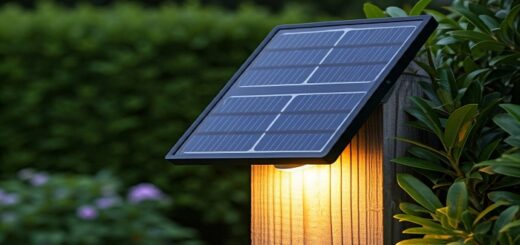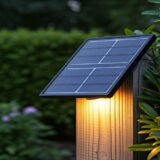What is the Difference Between P-type & N-type Solar Panels

What is the Difference Between P-type & N-type Solar Panels
Before we delve into the differences between P-type and N-type solar panels, let’s establish a fundamental understanding of semiconductors. Semiconductors are materials that have electrical conductivity between that of a conductor and an insulator. They form the backbone of modern electronics, including solar panels. What is the Difference Between P-type & N-type Solar Panels.
What are P-Type and N-Type Semiconductors?
P-type and N-type semiconductors are two fundamental types of semiconductors. The key difference lies in the majority charge carriers they possess:
- P-type semiconductors: In P-type semiconductors, the majority charge carriers are holes. Holes are essentially the absence of an electron. Think of it as a bubble in a pool – it’s not a thing, but rather the absence of something (water).
- N-type semiconductors: In N-type semiconductors, the majority charge carriers are electrons. These are negatively charged particles.
The Role of Doping
To create P-type and N-type semiconductors, we need to introduce impurities into the semiconductor material. This process is called doping.
- P-type doping: To create a P-type semiconductor, we introduce an impurity with more valence electrons than the semiconductor material itself. For example, boron is often used to dope silicon to create P-type silicon. The extra valence electron from the boron atom becomes a free electron, leaving behind a hole.
- N-type doping: To create an N-type semiconductor, we introduce an impurity with fewer valence electrons than the semiconductor material. Phosphorus is a common impurity used to dope silicon to create N-type silicon. The extra valence electron from the silicon atom becomes a free electron.
How P-Type and N-Type Semiconductors Work Together in Solar Panels
The magic of solar panels happens when P-type and N-type semiconductors are combined to form a PN junction.
- PN junction: A P-type semiconductor brings a region near the junction into contact with an N-type semiconductor, depleting it of charge carriers. This region is called the depletion region.
- Solar cell operation: When sunlight strikes the PN junction, the energy from the photons can excite electrons in the semiconductor material. These excited electrons can move across the depletion region and create a current.
P-Type vs. N-Type Solar Panels: A Comparison
While both P-type and N-type semiconductors are used in solar panels, there are some key differences between P-type and N-type solar panels:
1. Efficiency:
Generally, N-type solar panels are considered to have slightly higher efficiency than P-type solar panels. This is because N-type semiconductors have a higher carrier mobility, meaning that electrons can move more freely through the material.
However, the efficiency difference between P-type and N-type solar panels is relatively small, and other factors such as cell design and manufacturing processes also play a significant role.
2. Temperature Coefficient:
P-type solar panels tend to have a higher temperature coefficient than N-type solar panels. This means that their output power decreases more rapidly as the temperature increases.
This can be a disadvantage in regions with high temperatures, as it can reduce the overall energy output of the solar panel system.
3. Cost:
Historically, P-type solar panels have been less expensive to manufacture than N-type solar panels. However, advancements in manufacturing technology have narrowed the cost gap in recent years.
In some cases, N-type solar panels may even be more cost-effective when considering their higher efficiency and potential for longer lifespan.
4. Degradation:
Both P-type and N-type solar panels can experience degradation over time, which can lead to a decrease in their output power.
However, the rate of degradation can vary depending on factors such as the quality of the materials used, manufacturing processes, and environmental conditions.
In general, N-type solar panels are often considered to have a slightly lower rate of degradation compared to P-type solar panels.
5. Back Contact Solar Cells:
A relatively new type of solar cell, known as a back contact solar cell, uses a combination of P-type and N-type semiconductors.
These cells feature rear-side electrical contacts, maximizing the front surface area exposed to sunlight.
Back contact solar cells can offer higher efficiency and better performance compared to traditional solar cells.
Beyond P-Type and N-Type: PERC Solar Cells
In addition to P-type and N-type solar cells, there are other types of solar cells that have gained popularity in recent years. One such type is the Passivated Emitter Rear Cell (PERC).
PERC solar cells incorporate a layer of passivated emitter on the back side of the cell, which helps to reduce recombination losses and improve efficiency.
PERC cells, now a mainstay in the solar industry, have substantially enhanced solar panel efficiency.
Choosing the Right Solar Panel for Your Needs
When selecting solar panels for your home or business, it’s important to consider factors such as your location, energy consumption, budget, and long-term goals. While P-type and N-type solar panels are both viable options, it’s essential to evaluate the specific advantages and disadvantages of each type to make an informed decision.
By understanding the differences between P-type and N-type solar panels, you can better assess the suitability of these technologies for your energy needs and make a confident choice for your solar panel system.
Advanced Solar Cell Technologies: Beyond P-Type and N-Type
While P-type and N-type solar cells have been the dominant technologies for many years, researchers and manufacturers have been exploring more advanced solar cell designs that promise even higher efficiencies and lower costs.
1. Thin-Film Solar Cells
Thin-film solar cells, constructed from significantly thinner materials than conventional silicon-based solar cells, offer greater flexibility and reduced weight. This versatility makes them ideal for a broader spectrum of applications, such as building-integrated photovoltaics and portable solar power systems.
- Amorphous silicon (a-Si) solar cells: While amorphous silicon solar cells are more cost-effective due to their non-crystalline nature, they exhibit lower efficiency compared to their crystalline counterparts.
- Cadmium telluride (CdTe) solar cells: CdTe cells, celebrated for their high efficiency and competitive pricing, are commonly used in large-scale solar power plants.
- Copper indium gallium selenide (CIGS) solar cells: CIGS cells offer high efficiency and flexibility, making them suitable for both residential and commercial applications.
2. Perovskite Solar Cells
Perovskite solar cells are a relatively new type of solar cell that has shown tremendous promise in terms of efficiency and cost. Perovskites are a class of materials with a crystal structure that is similar to the mineral perovskite.
- High efficiency: Perovskite solar cells have achieved record-breaking efficiencies, surpassing those of traditional silicon-based solar cells.
- Low cost: Perovskite materials are relatively inexpensive to produce, making them a potentially cost-effective option for solar energy.
- Challenges: Despite their promise, perovskite solar cells still face some challenges, such as stability and scalability.
3. Organic Solar Cells
Organic solar cells utilize organic materials like polymers and small molecules. These cells offer the potential for flexible, lightweight, and low-cost solar panels. However, their efficiency is currently lower than that of silicon-based solar cells.
Applications: Organic solar cells excel in applications that prioritize weight and flexibility, like wearable electronics and building-integrated photovoltaics.
4. Tandem Solar Cells
Tandem solar cells combine multiple layers of different semiconductor materials, each optimized to absorb light at different wavelengths. This allows for higher overall efficiency compared to single-junction solar cells.
Applications: Researchers and developers primarily use tandem solar cells, but they have the potential to become more commercially available in the future.
5. Concentrating Photovoltaic (CPV) Systems
CPV systems use lenses or mirrors to concentrate sunlight onto a small area of a highly efficient solar cell. This allows for higher power output per unit area compared to traditional solar panels.
Applications: Large-scale solar power plants often employ CPV systems to meet their high power output needs.
The Future of Solar Technology
As research and development continue to advance. We can expect to see even more innovative and efficient solar cell technologies emerging in the coming years. These advancements will help to drive down the cost of solar energy and make it even more accessible to people around the world.
In addition to technological advancements, the solar industry is also benefiting from favorable government policies. Declining manufacturing costs, and growing public awareness of the benefits of renewable energy. These factors are all contributing to the rapid growth of the solar energy market.
Conclusion
Solar energy has the potential to play a major role in addressing our global energy challenges. By understanding the different types of solar cells and the ongoing advancements in this field. We can appreciate the incredible potential of this renewable energy source. As solar technology continues to evolve, we can look forward to a future powered by clean, sustainable energy.

















